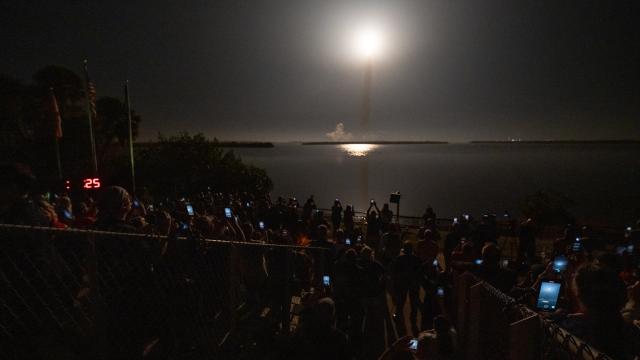The most anticipated launch of the year has finally happened, so it gives us great pleasure to show you some of the more memorable moments from this historic event. NASA’s most powerful rocket ever, Space Launch System, has passed its biggest test yet.
After two scrubs, two hurricanes, and an extra launch rehearsal, NASA’s SLS finally blasted off, delivering the Orion crew capsule to space and kickstarting the Artemis lunar program. Photos of the launch were — as expected — nothing short of spectacular.
Dusk descends
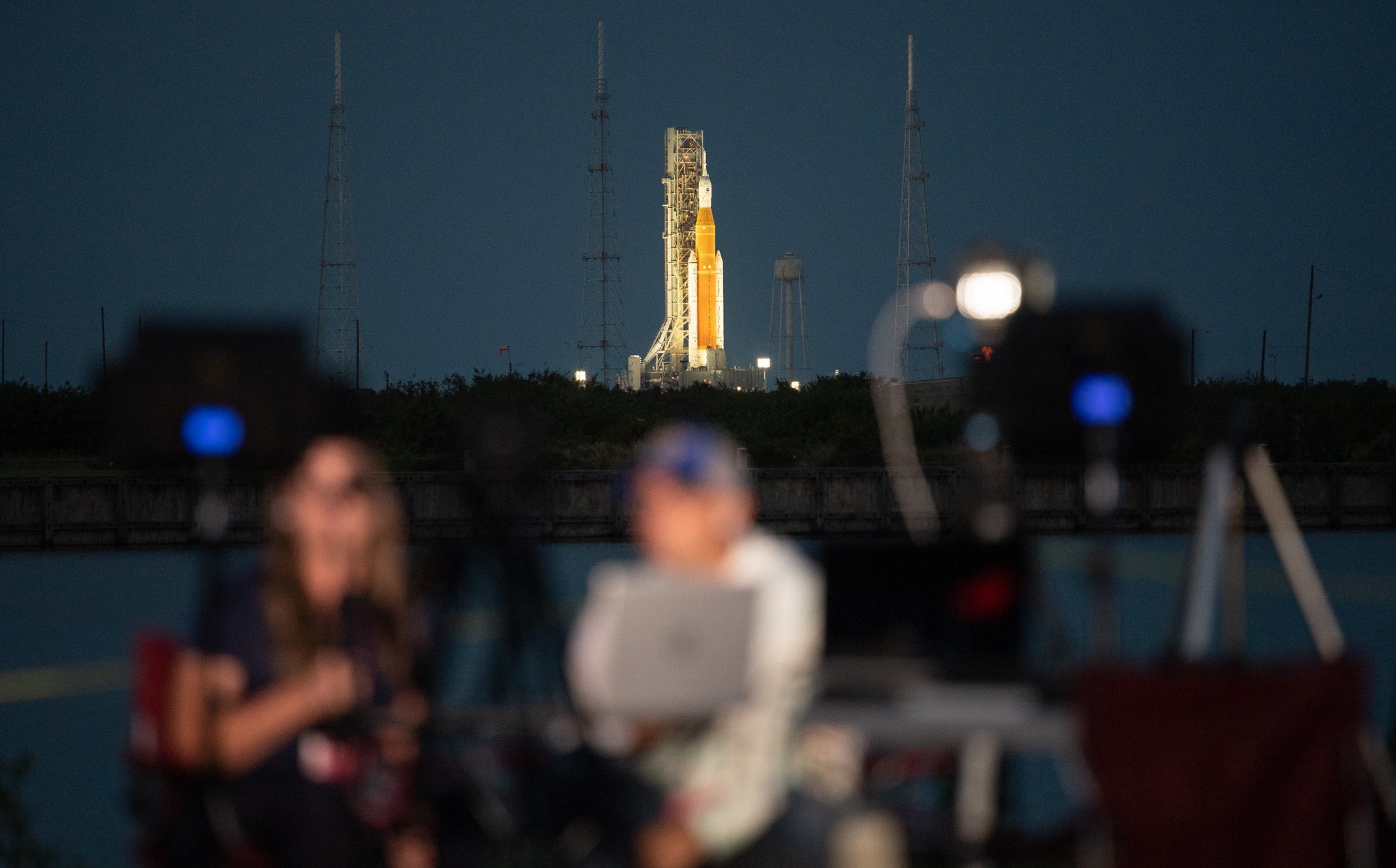
The 98.15 m-tall rocket standing proud at Launch Pad 39B on the evening of November 15. Hurricane Nicole swept through much of the Florida peninsula last week, causing some minor damage to the rocket but nothing the NASA mission managers deemed to be a problem.
Next stop: space

Close-up view of the Launch Vehicle Stage Adaptor and the Interim Cryogenic Propulsion Stage.
Red crew to the rescue

The loading of cryogenic propellants was going well until an intermittent hydrogen leak was detected on a replenish valve. A team of specialists known as the “red crew” headed to the pad “to torque packing nuts at the base of the mobile launcher,” as NASA’s Exploration Ground Systems explained at 1:31 p.m. AEDT on Wednesday. The fix worked, making the red team the unsung heroes of yesterday’s successful launch.
Exactly where you wanna be

A group of children at the Banana Creek viewing site patiently waiting for SLS to launch. The megarocket has been in development since 2010 and cost more than $US23 ($32) billion to develop.
Water and fire

The moment of ignition, with the Launch Pad Deluge System pouring 450,000 gallons (2 million litres) of water in an attempt to reduce extreme heat damage to the pad and suppress the thunderous noise. The system was expected to reduce the acoustic levels to about 142 decibels, which is still absurdly loud.
Ignition

The rocket blasted off at 5:47 p.m. AEDT, some 43 minutes into the two-hour launch window. The two side boosters and four RS-25 engines combined to produce 8.8 million pounds of thrust at liftoff, officially making SLS the most powerful operational rocket in the world.
NASA’s new Moon rocket

The Space Launch System is capable of lifting more than 57,320 pounds (26 metric tons) of cargo and crew to the Moon. The megarocket, along with the Orion crew capsule, are keys to NASA’s Artemis program, which seeks to return humans to the Moon after a long absence and keep them there. Importantly, Artemis is serving as a stepping stone for an even greater goal: a crewed mission to Mars.
Artemis, arise!
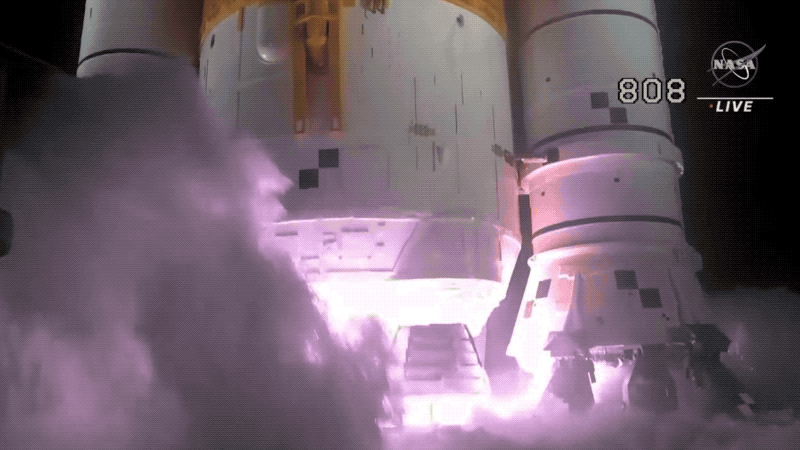
The view of SLS rising up from the mobile launcher literally made me gasp, and my hands shook with excitement as I prepared this GIF — something I had been waiting to do for years. The megarocket was initially supposed to launch in 2018.
Clearing the tower
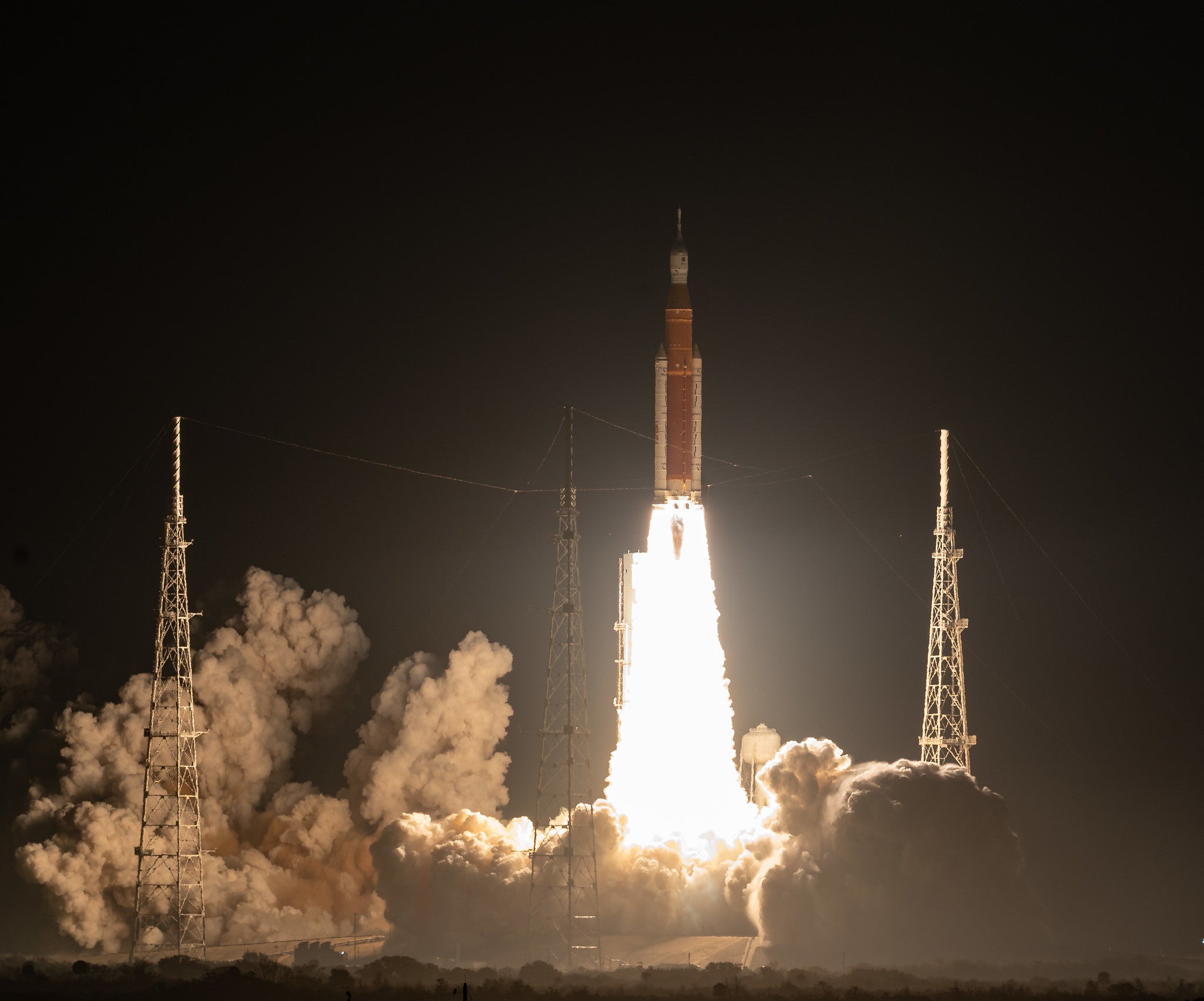
A combination of factors led to the early morning launch window, including the positions of the Earth, Sun, and Moon. A daytime launch would’ve been nice, but views of the rocket blasting off in the dead of night were undeniably cool. Just look at those billowing plumes.
Feeling the rumble

Thousands of spectators gathered for the launch, including these awe-struck folks at the Banana Creek viewing site. They don’t look disappointed.
A spectacular view from any distance
Guests at the Banana Creek viewing site watch as SLS lights up the dark Florida sky. The megarocket successfully delivered the uncrewed Orion capsule to space, sending it on a trajectory toward the Moon. The capsule is on a 25-day journey that will end with a splashdown in the Pacific Ocean on December 7.
Now that’s a plume
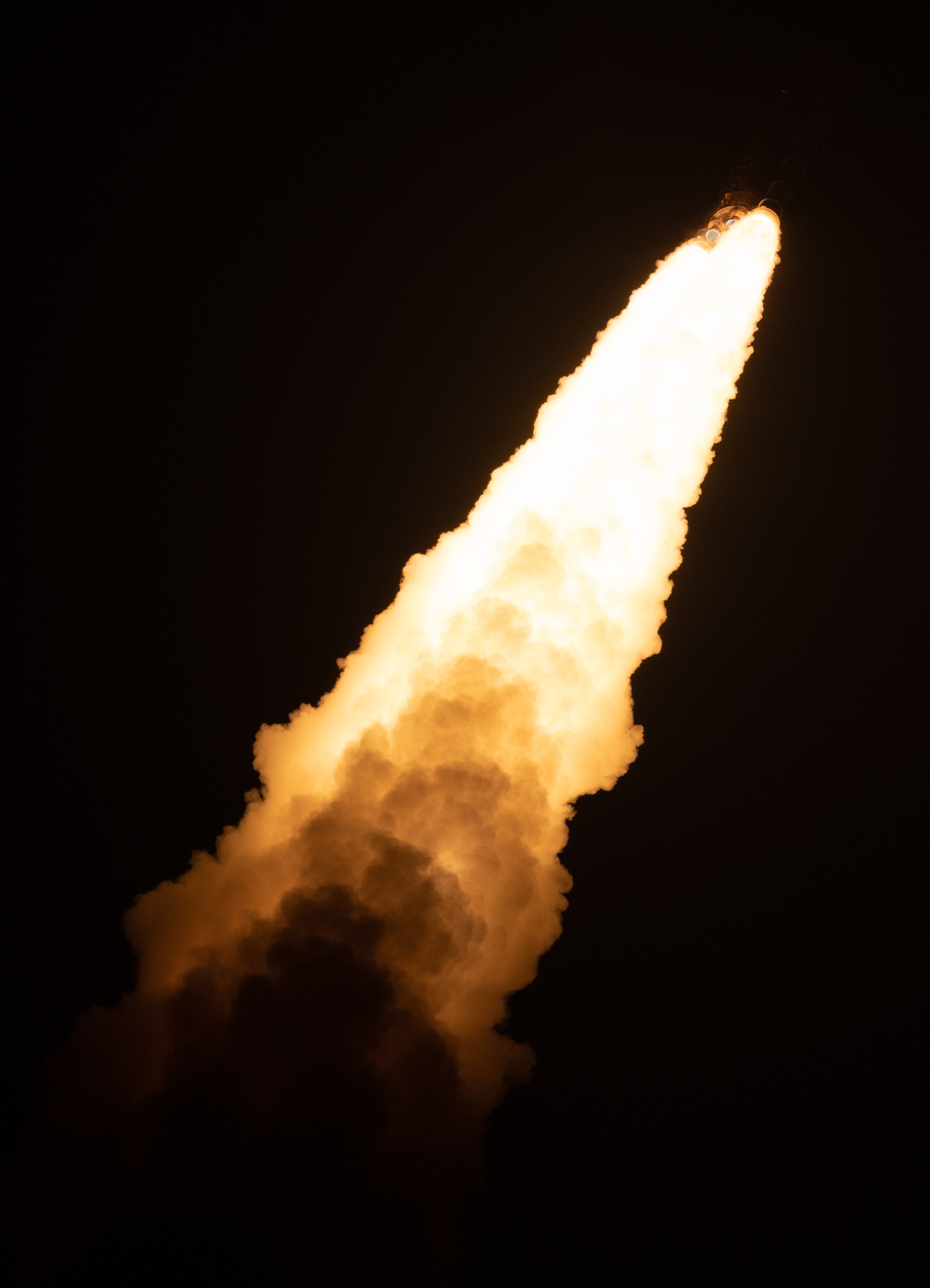
All four of the RS-25 engines used for the Artemis 1 launch went to space during the Space Shuttle era. NASA poached the engines from the retired Shuttles, made some upgrades, and slapped them onto the SLS core stage. None of the engines involved in today’s launch were recovered, but NASA is currently in possession of 12 RS-25s, and more are in development.
Into the night
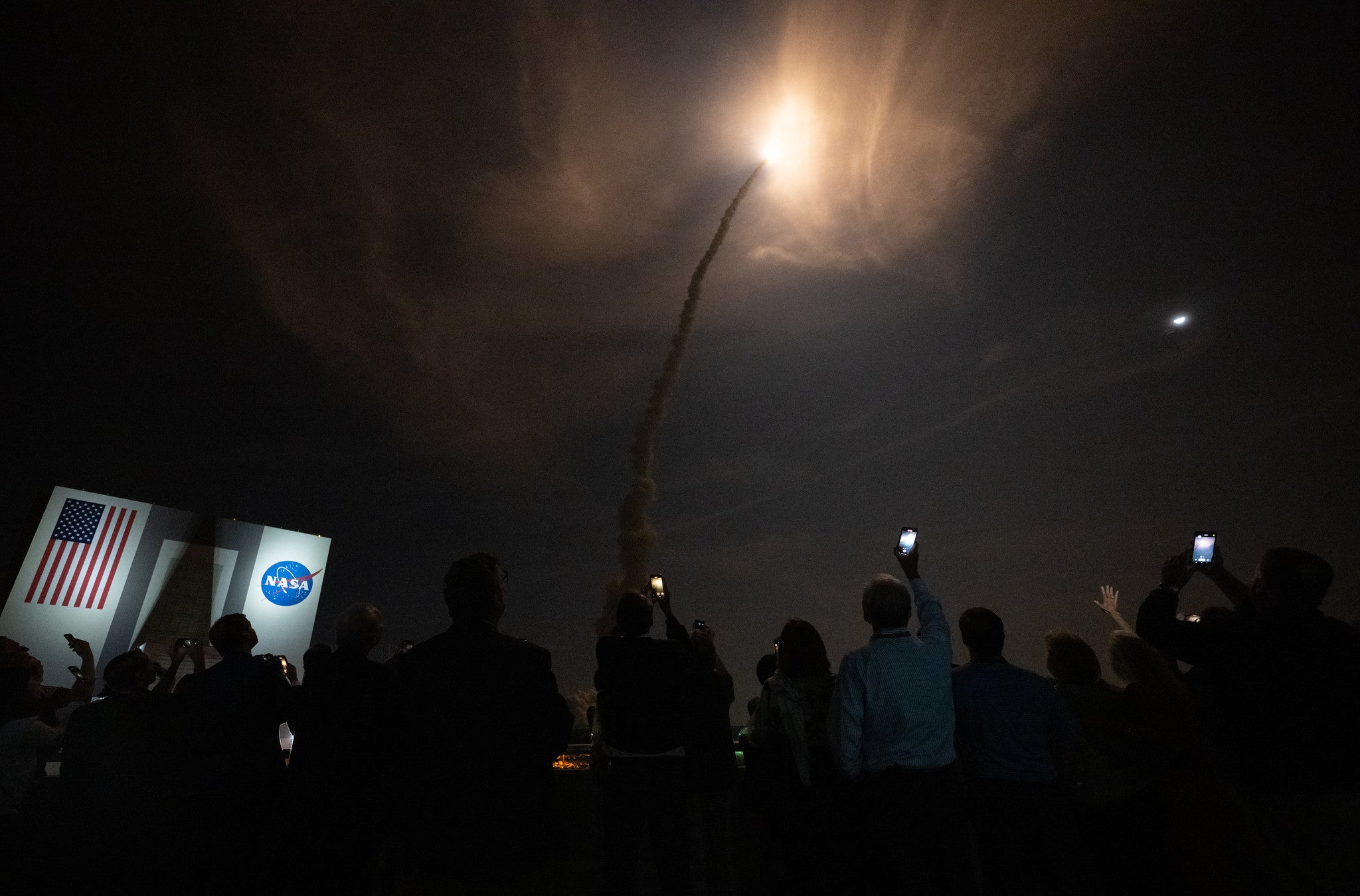
Spectators at Kennedy Space Centre watch as SLS fades from view.
The most powerful rocket ever built

NASA attempted to launch SLS on two previous occasions, but the third time proved to be the charm.
Trans-lunar injection
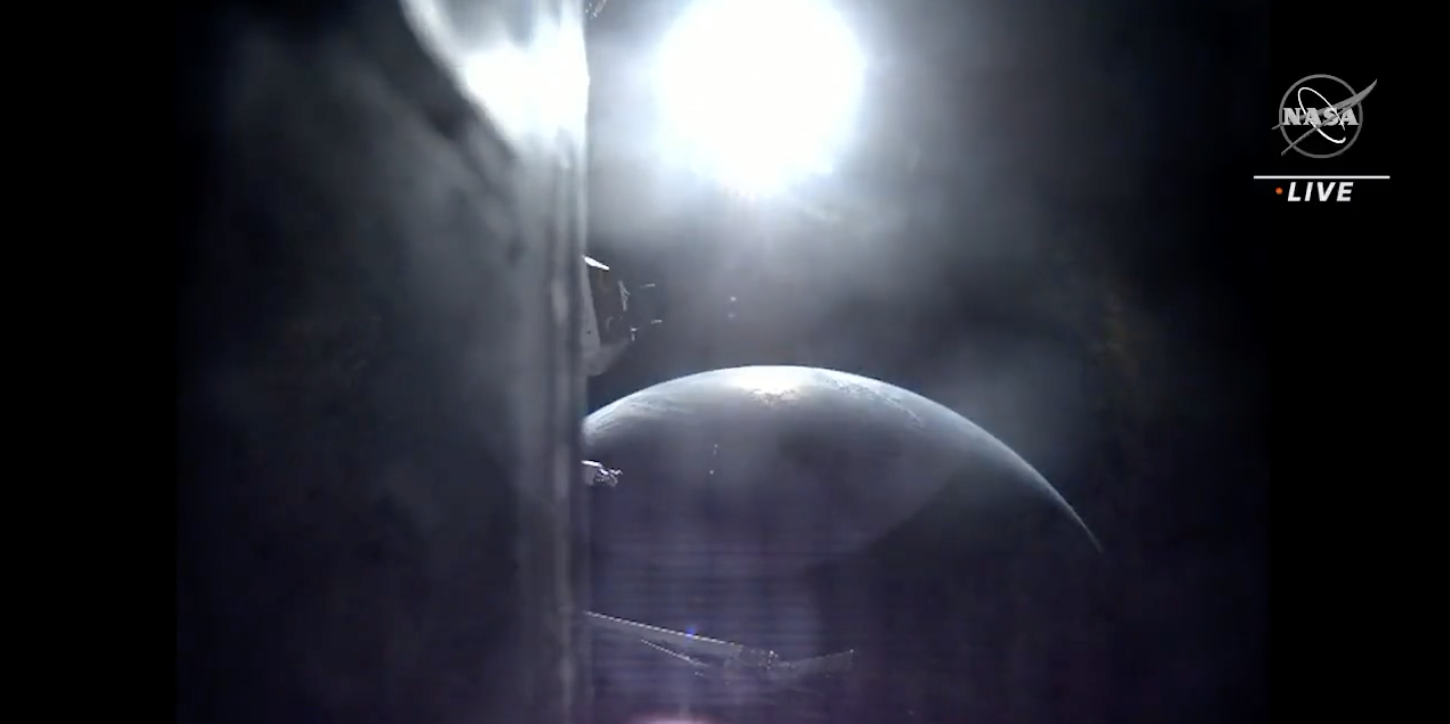
A view from Orion, showing Earth and the Sun in the background. The capsule will reach the Moon in four days. No one is on board Orion, save for three manikins that will measure the stresses that will have to be endured by humans. Artemis 1 will pave the way for Artemis 2, in which a similar mission will be repeated, but with astronauts inside the capsule.
